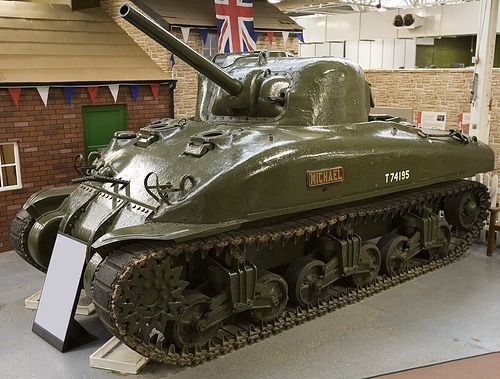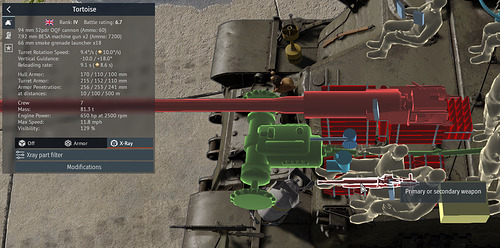History
On August 31, 1940, the Ordnance Department submitted detailed requirements for a new medium tank to replace the stopgap M3 Lee then in service. However, development of this new design would not begin until the production designs for the M3 were finalized and the tank had entered full-scale production. On February 1, 1941, the Chief of Ordnance issued a directive to proceed immediately with the design of the M3’s replacement. Unlike the M3, which mounted its 75 mm gun in the hull with only limited traverse, the new design was to feature a fully rotating turret for the 75 mm main gun.
On April 18, 1941, one of the five proposed designs was selected. It became known as the T6. The design was based on a modified M3 hull and chassis, but incorporated a newly designed fully rotating turret to house the 75 mm gun. The hull featured two escape hatches on either side, but otherwise retained most of the M3’s basic features, including its lower hull, engine, gearbox, final drive, suspension, and tracks. The engine compartment was widened to accommodate the more powerful Wright G100 or G200 engines when they became available, although the T6 pilot was fitted with the R975 EC2 engine. A 37 mm gun had initially been proposed as a coaxial weapon with the main gun, but this was later replaced with a .30 caliber machine gun. In total, the vehicle carried five machine guns and seated a crew of five.
In May 1941, the Ordnance Committee recommended the construction of a full-scale wooden mock-up and a pilot vehicle. This was approved the following month, and the design was officially designated Medium Tank T6. The pilot was completed on September 2, 1941, and inspected by representatives of the Armored Force and the Ordnance Department. It was armed with the 75 mm gun M2, a shorter weapon than the later M3, fitted with double counterweights near the muzzle to balance the gun and enable proper operation of the gyrostabilizer for stabilizing elevation.
Following inspection, a number of modifications were proposed for the pilot and subsequent production models. These included the removal of the commander’s cupola with its integral .30 caliber machine gun and replacement with a split-hatch design, elimination of the hull sponson doors, addition of a rotating periscope above the loader’s position in the turret roof, replacement of the rotor-mounted bow machine gun with a ball mount, installation of a .50 caliber anti-aircraft machine gun, and the addition of a gun shield. In September 1941, the Ordnance Committee recommended that the T6 be standardized with these changes as the Medium Tank M4. The commander’s cupola was removed shortly thereafter, on September 15, and the recommendation was formally approved the following month. Construction of production pilots began in November. On December 11, 1941, the welded-hull version was designated M4, while the cast-hull version became the M4A1. The British Army would later designate the series as the Sherman.
The T6 pilot itself remained in use as a test vehicle at Aberdeen Proving Ground, where it was employed to evaluate components and assemblies for production tanks. The vehicle was last recorded in February 1947, after which its fate is unknown, though it was likely scrapped during the Korean War-era scrap drives.









